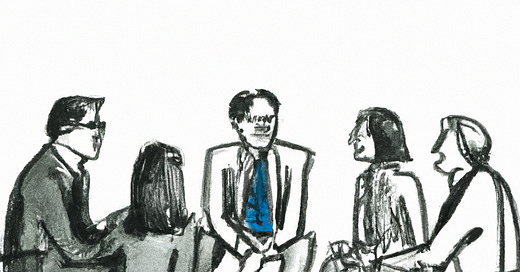This is What (Workplace) Democracy Looks Like
Some real-life examples of more democratic management styles from delegates at the 2023 Skoll World Forum
Last week philanthropists, nonprofit leaders, investors, and Niala Boodhoo from Axios gathered in Oxford, England for the annual Skoll World Forum. I attended thanks to the Skoll Centre for Social Entrepreneurship, and I took advantage of the trip by asking delegates how they had experimented with workplace democracy,. Here are a few of the examples I gathered:
One east African nonprofit runs a quarterly “happiness survey,” asking employees how happy they are with their job, how happy they are with the company, and what are the obstacles to their happiness. They then make the responses public to the whole company, where employees are invited to take on solving some of the issues that come up.
The CEO of an American company tried multiple ways to encourage participation and feedback. They tried and gave up on anonymous feedback, because it immediately devolved into misogynist trolling. A “listening tour” flopped, too, because they didn’t do a good enough job communicating the resultant changes to employees. A representative council of employees crumbled, too, because the folks elected to it were the same ones who were promoted quickly and had to give up their specific seats on the council.
Another delegate had worked for many years at the Self-Employed Women’s Association (SEWA), a large collective of trade unions in India that has been in operation since 1972. Hear about their organization from their current secretary general here.
One leader of a for-profit company in Africa made an attempt at direct democracy among staff. In keeping with the expectations of James Madison, a cofounder of America, the employees quickly developed “factions” (see Federalist 10). That leader drew a distinction between promise of participation (which they wanted) and the dangers of direct democracy (which they were skeptical of). They also saw lots of examples of Potemkin democracy, where leaders would only put issues to a vote when the outcome was going to go their way.
A couple of takeaways:
Some of these experiments “failed,” in the sense that they didn’t play out like employers had hoped. But they were successful as experiments if we learn from them what works and what doesn’t. Switching to democratic decision-making, for example, requires thinking clearly about how people might take advantage of a new distribution of power.
It was notable that a lot of this experimentation was woman-led, which made me think of the excellent book Women & Power by Mary Beard.




